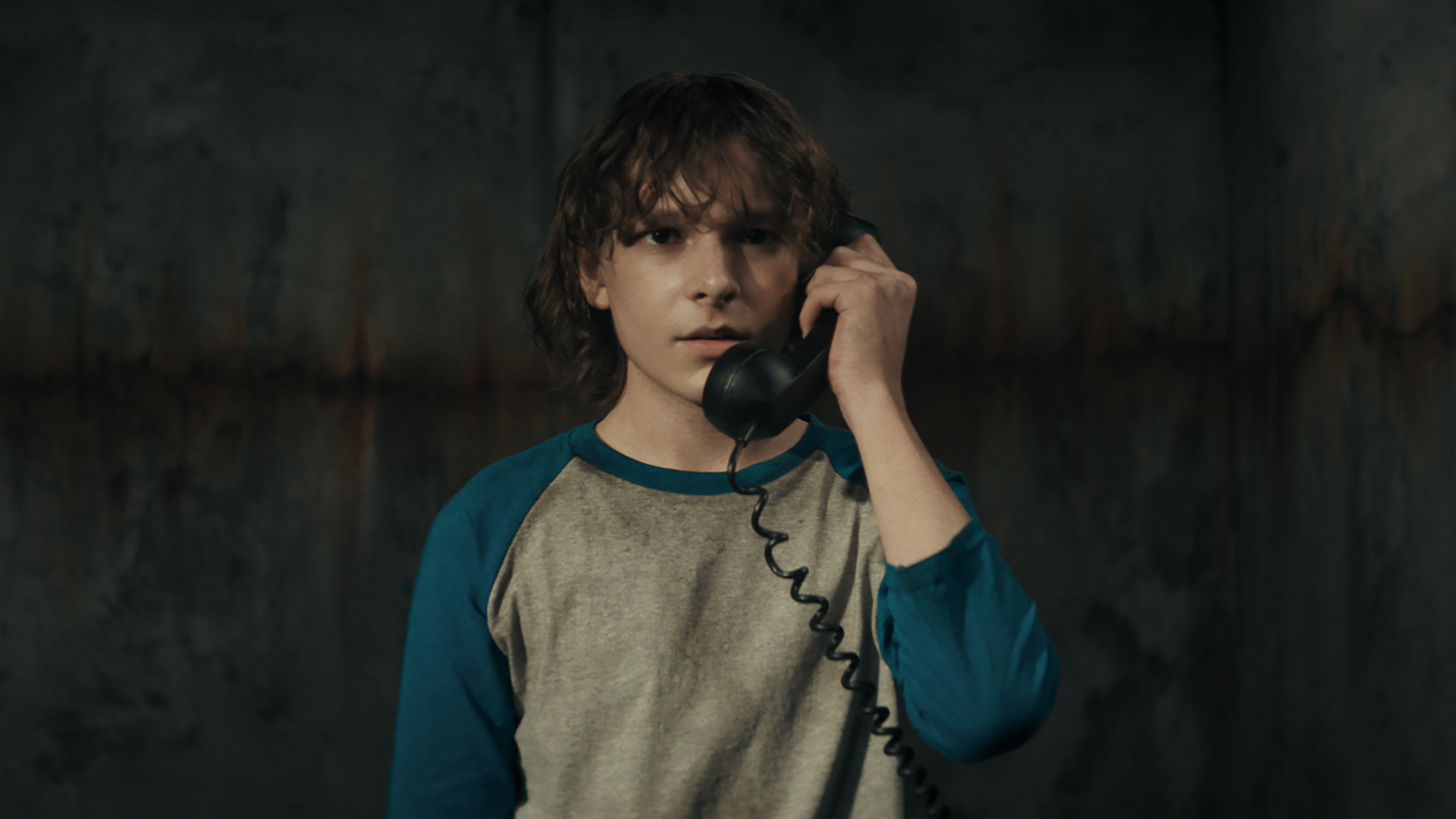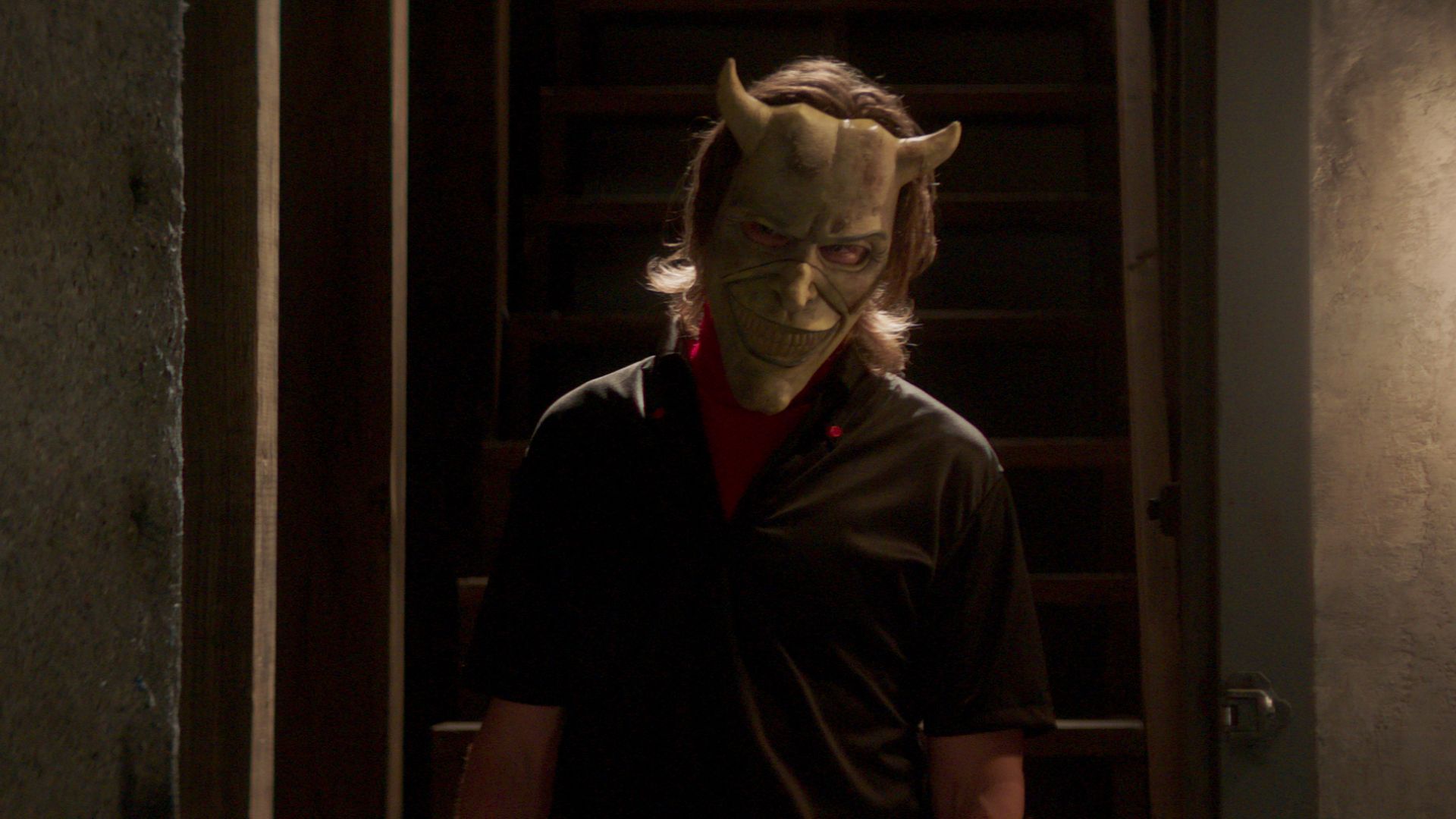The making of The Black Phone, the terrifying new horror from the team behind Sinister
SFX meets the creative team bringing the horror story to the big screen

After collaborating on Doctor Strange and the Sinister films, filmmaking partners Robert Cargill and Scott Derrickson decided to adapt the 2004 horror short story The Black Phone into a feature film, by combining the elements of the tale with Derrickson’s own traumatic childhood memories.
Written by Stephen King’s son Joe Hill (find it in his 2005 short story collection 20th Century Ghosts), it tells the story of a 13-year-old boy named John Finney who is kidnapped by a serial killer. When the Galesburg Grabber locks Finney inside his soundproof basement, the boy discovers a seemingly disconnected black phone, through which he’s somehow able to speak to the killer’s previous victims.
"One day in 2005, I entered a book store and found Joe Hill’s book of short stories with The Black Phone, not knowing who he was at the time," Derrickson, who co-produced and co-wrote the film with Cargill, tells SFX. "I read The Black Phone while standing in the store, and I immediately recognized that the story’s concept would make for a good horror film."
Cargill and Derrickson toyed with the idea of turning the story into a feature for more than a decade. They finally moved ahead with the project in early 2020, when the pair decided to step away from the Doctor Strange sequel over creative differences with Marvel Studios. "Back when Sinister was in production, about 10 years ago, before that film was released Scott and I talked about The Black Phone as being our next film," says Cargill.
"However, it wasn’t the right time. We felt like there was no first act and a thin third act. However, we never let it go, and kept on developing the story. With the Doctor Strange sequel, it was a case where we wanted to make one kind of film, and Marvel wanted a different kind of film. At that point, we knew that it was time to finally make The Black Phone."
Hawke the slayer

For the purposes of incorporating Derrickson’s own childhood history into the film, they decided to move the original story’s setting of Galesburg, Illinois to the northern part of Denver, Colorado in 1978 – Derrickson’s home turf.
"I grew up in a violent household and a violent neighborhood," he says. "When I was eight years old, a friend of mine who lived nearby knocked on my door and told me that his mother had just been murdered. There was also a lot of domestic violence – in my home, and in the homes of the children who I grew up with. It was a scary, violent place to grow up in, and I tried to bring the reality of that to the film."
Get sneak previews, exclusive competitions and details of special events each month!
Instead of beginning with the first interaction between the boy, now called Finney Shaw, and the killer – who the filmmakers renamed simply The Grabber – Cargill and Derrickson decided to open the film up by exploring Finney’s everyday boyhood existence. "In terms of inserting my own childhood into this film, I was very much influenced by Francois Truffaut’s great New Wave drama The 400 Blows. Like that film, I decided to present Finney, at least in part, as my surrogate, through which I explore my own rough childhood," says Derrickson. "When we first meet Finney, he’s very shy as a result of being bullied by his classmates, who don’t appreciate Finney’s special qualities. He’s also dealing with an alcoholic father, a widower, who is struggling to cope with raising Finney and his younger sister Gwen, who’s seemingly the only person in the world Finney can lean on for love and strength and support."

With the help of legendary special effects expert Tom Savini, Cargill and Derrickson also decided to reimagine the character of the killer. "When Joe published the short story in 2004, almost 20 years after It was published, it was obvious that the Grabber character was influenced by Pennywise, who was influenced by serial killer John Wayne Gacy," Cargill says. "After the film version of It was released a few years ago, Scott and I knew that we had to rethink the look and style of the Grabber. We envisioned him as a magician who is disguised as the devil – an angry devil and a smiling devil with a leather mask. It’s the face of a mysterious sadist, a truly evil figure."
When it came to choosing an actor to play this most unsavory character, their first choice was Ethan Hawke, with whom Cargill and Derrickson collaborated on Sinister. However, while Hawke was amenable to the idea of reuniting with the filmmakers, he wasn’t so keen on playing a villain, much less a child killer.
"Ethan didn’t want to take the role at first, given the character and plot description," says Derrickson. "However, he agreed to read the script, and less than 24 hours after he called me and left a message on my phone, speaking in the creepy Grabber voice. He read one of the lines from the script before he told me that he would take the role. Ethan brought a deep understanding of the character to the role, and his performance in the film is complex, frightening, moody, and unlike anything that he’s ever done before as an actor."
Children in need

For the demanding role of Finney, Cargill, and Derrickson chose newcomer Mason Thames, who’s making his feature film debut. "Finney is a clever but shy boy who is very close to his younger sister Gwen, with whom Finney has an almost psychic connection," says Thames, who cites Halloween as being his favorite horror film.
"The biggest challenge for me in playing this role was imagining that I was trapped in the Grabber’s basement, which is disgusting and dirty, without my family, without anyone knowing where I am and having to consider the possibility that I’m going to be killed, like all of the other missing children. The ghosts, their voices, are terrifying."
Besides fleshing out the relationship between Finney and Gwen to further expand the 7,000-word short story into a feature-length screenplay, Cargill and Derrickson focused on the ghostly voices that Finney hears on the antique rotary telephone attached to the basement wall. Instead of speaking to the ghost of only one murdered child, as is the case in the original tale, Finney hears the whispers of multiple dead children, whose histories are also revealed through flashbacks.
"The phone starts to ring, and Finney hears the voices of children who he knew, who he went to school with, and now they’re dead. Now all that they want, all that they can do, is to prevent Finney from ending up the same way," says Thames. "They tell Finney what he should do, give him clues. Finney figures out that the other missing children were killed pretty quickly. However, the Grabber doesn’t seem to want to kill Finney, at least not right away. The Grabber finds Finney interesting."

Besides the ghosts, the only other person who is attuned to Finney’s situation is Gwen, played by Madeleine McGraw, who seemingly has the ability to sense her brother’s distress.
"As is said in the film, Gwen is the sunshine in the apocalypse, the eyes of love, certainly in terms of Finney’s life," says Derrickson. "The film is very much grounded in their brother-sister relationship and how they protect each other. Gwen is haunted by dreams and premonitions just like her mother was, and Gwen had a vision of a child who was abducted by the Grabber before Finney was taken. However, Gwen didn’t sense that Finney was going to be the Grabber’s next target."
While the movie is set in the ’70s, the filmmakers don’t view the past through rose-tinted glasses. "This film isn’t at all nostalgic for the 1970s, and I certainly don’t look back at that period with much fondness," says Derrickson. "As much as I enjoy ’70s-period films like Dazed And Confused, that’s not what I experienced as I was growing up. Instead, I remember the aftermath of the Charles Manson murders. I remember [serial killer] Ted Bundy moving through Colorado, killing a woman, and then being put on trial. I remember seeing a lot of children in my neighborhood bleeding all of the time."
Derrickson’s long relationship with The Black Phone – from reading the story to the eve of the film’s release – has been a cathartic experience. "Most of the children in the film, including the ghosts whom Finney speaks to on the phone, were based on children I grew up with," he says, adding that he spent several years in therapy in order to process his painful childhood memories.
And, while acknowledging that the element of child endangerment might be uncomfortable viewing for some, the filmmakers don’t believe that the film is at all exploitative or tasteless. "It’s about the resilience of childhood, and that’s what motivated me to want to make it for over 15 years," says Derrickson. "In writing scenes for it, I felt a personal connection with the children in the story – both Finney and Gwen, and also the children who speak to Finney through the phone – and I felt a great appreciation for their courage and their need for justice.
"Ever since I was a child, I’ve used the horror genre as a way of confronting the evils in my life, and The Black Phone has been an outlet though which I’ve been able to deal with the past and understand how it’s impacted my adult life."
The Black Phone is in UK cinemas now, US theaters on June 24. This feature originally appeared in SFX magazine – make you you subscribe to the mag and never miss another terrifyingly good feature again!


